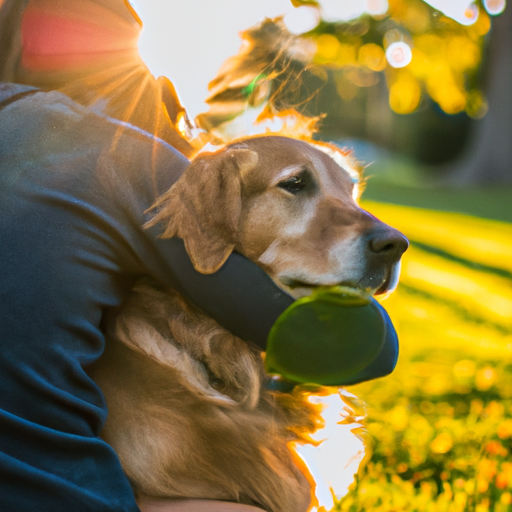Just as humans have the innate need for connection, so do our furry friends. Dogs, being social animals, have their unique ways of expressing affection and bonding with their caretakers. One of the most endearing ways dogs exhibit their love is through what we could call canine “hugs”. But do dogs really hug like humans? If so, how exactly do they do it? Let’s dive in and discover the fascinating world of doggy hugs, deciphering the signals and understanding the science behind it.
Table of Contents
- Understanding Canine Behavior
- How Do Dogs Hug?
- The Science Behind the Hug
- Tips to Encourage Your Dog to Hug
- Understanding When a Dog’s Hug is Uncomfortable
- Frequently Asked Questions
Key Takeaways
- Dogs express their affection differently from humans, often through body language that we can interpret as “hugs”.
- A dog’s hug can be a sign of bonding, trust, and social connection.
- It’s essential to understand and respect your dog’s comfort levels when it comes to physical contact.
Understanding Canine Behavior
Canine behavior is complex and fascinating. Dogs are known for their keen sense of empathy and their ability to form strong bonds with humans. They express their emotions in a variety of ways, some of which can be easily misunderstood by their human companions. PetMD has an excellent resource for understanding the nuances of dog behavior.
How Do Dogs Hug?
Dogs don’t give hugs in the way that humans do. Instead, they express affection and connection through a variety of behaviors that we might interpret as hugs. Some dogs might lean into you or place their paw on you – these are their unique ways of giving a ‘hug’. Others might nuzzle their head against you or simply rest their head on your lap. Ever had your dog jump up and place their front paws on your shoulders? That’s their version of a bear hug!
For more insights on dog behaviors, check out this article on OneTopDog.
The Science Behind the Hug
Scientifically, these doggy ‘hugs’ could be attributed to the dog’s instinctive pack behavior. Dogs are social animals, and these gestures are forms of bonding and showing submission to their ‘pack leader’. However, it’s also a sign of trust and comfort with their human companions.
A study from Japan’s Azabu University found that dogs’ oxytocin levels – a hormone associated with bonding and affection – increase when they interact closely with their human caregivers. This suggests that these canine ‘hugs’ are indeed expressions of love and connection.
Tips to Encourage Your Dog to Hug
It’s essential to remember that not all dogs are comfortable with physical affection. Here are some tips to encourage your dog to ‘hug’:
- Respect Your Dog’s Boundaries: Always watch for signs of discomfort and never force your dog into physical contact.
- Positive Reinforcement: Reward your dog with treats and praise when they show affectionate behavior.
- Consistent Training: Consistency is key in training your dog to be comfortable with ‘hugs’ or other forms of affection.
Understanding When a Dog’s Hug is Uncomfortable
As a responsible dog parent, it’s crucial to understand when your dog’s ‘hug’ might be a sign of stress or discomfort. For instance, if your dog is leaning into you excessively, it could be a sign of anxiety. OneTopDog has a useful guide on understanding dog behavior that could help you decipher these situations.
Frequently Asked Questions
Q: Do all dogs ‘hug’?
A: Not all dogs use physical contact as a form of affection. Each dog has its unique ways of expressing love and connection.
Q: Is it okay to hug my dog?
A: While some dogs might enjoy a gentle embrace, others might find it stressful. Always consider your dog’s comfort levels and body language.
Q: Why does my dog lean on me?
A: Leaning can be a form of a ‘hug’ from your dog. It can also be a sign of trust and comfort. However, excessive leaning could indicate anxiety or stress.
In conclusion, understanding your dog’s unique ways of expressing affection, such as their version of a ‘hug’, can strengthen your bond and ensure that your furry friend feels loved and secure. After all, the language of love transcends species.



